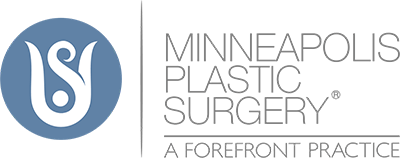How to Avoid Capsular Contracture
Breast implants do not become hard–ever!
When a breast enlargement patient develops abnormally hard breasts, the problem is the scar capsule around the implants — for one reason or another, the scar tissue that forms the capsule has thickened and contracted, squeezing the implant into a smaller space and causing the hard “feel” to develop. The human body creates a scar around any kind of foreign body, whether it is a pacemaker, a breast implant, or an artificial hip. Since every person forms scar tissue around any foreign body, every woman undergoing breast augmentation will have a capsule, but fortunately, only a few will develop capsular contracture to a problematic degree. If the scar capsule is thin, soft, and pliable around a breast implant, the augmented breast will feel soft. Since all scar tissue contracts somewhat, an excessively thick, non-pliable, and tightly-contracted scar capsule around a breast implant can make an augmented breast feel hard. Capsular contracture can be mild (Baker grade 2), moderate (Baker grade 3), or severe and visibly deforming (Baker grade 4).
Many studies have been conducted over the past several decades regarding capsular contracture, and how to control or minimize the likelihood that it will occur.
With a surface skin cut or surgical incision, despite any surgeon’s skill, best efforts, and technique, some patients will heal with a thick, wide, or ugly scar. Mild to moderately thickened or raised scars are termed hypertrophic; the thickest and most raised skin scars are called keloids. This unsatisfactory scarring is based on a individual patient’s genetics of healing, occurs rarely, and is slightly more common in patients with darker skin. Vitamin E massage, scar pads, steroid tape or injections, or even scar revision plus any or all of the above can be used to reduce visible surface scars. Radiation treatments have even been used for the most severe surface scars, known as keloids. Fortunately, these are uncommon.
Similarly, internal scar contracture around a woman’s breast implants causing firmness or distortion of appearance is also uncommon, occurring in 5-10 percent of augmentation mammoplasty patients. If this occurs, surgical revision may be necessary, and contracture may in some cases recur despite careful re-operation.
Avoidance of most cases of capsular contracture is possible, in our opinion, by careful initial surgery and patient compliance with postoperative instructions. Any foreign body, such as talcum powder from the surgeon’s gloves, cotton fibers from surgical sponges, dust or bacteria from the air of the operating room on the surface of the implant, and bacteria from the ducts of the breast or patient’s skin, as well as postoperative bleeding or bruising, can cause an increase in scar formation. This is analogous to a grain of sand in an oyster; in humans, a pearl is not formed, just layers of scar tissue, in response to one or several of these irritants. Every effort is taken to reduce these to an absolute minimum in order to minimize the likelihood of capsular contracture.
In 1989, Boyd Burkhart, MD and plastic surgical colleagues reported the use of Betadine irrigation after pocket creation for breast augmentation. Without changing any other factor in one surgeon’s technique, the reported series of patients in this study showed a 50% reduction in the incidence of capsular contracture. Following this report in our literature, MPS surgeons have used Betadine with each of our breast cases since 1989. More recently, Bill Adams, MD has cultured the bacteria responsible for capsular contracture, and developed a triple-antibiotic irrigation solution that also reduced the risk of capsular contracture. Interestingly, at the 2017 ASAPS meeting in San Diego, Dr. Adams stated he has added Betadine to his Adams formula. He also described 14 points of recommendation to reduce the risk of capsular contracture, all of which we perform at MPS.
Several years ago, both plastic surgeons at Minneapolis Plastic Surgery, LTD. switched from a minimal-touch technique to an absolutely no-touch technique (facilitated by the Keller funnel) to place implants without ever touching them with (gloved) hands, and without the implants ever touching the patient’s skin as they are inserted. Prior to implant placement, there is very precise creation of the surgical pocket without blunt dissection, as well as pinpoint cautery control of capillary bleeding, antiseptic irrigation, and avoidance of sponges in the pocket. Neither Dr. Tholen nor Dr. Gervais use drains for breast augmentation. Drains may allow blood or fluid out of the pocket, but of greater concern is that they can allow bacteria in, increasing the risk of contracture or infection severe enough to require implant removal. Even “normal” skin or breast duct bacteria can cause a biofilm on the surface of breast implants leading to capsular contracture, and bleeding can provide the “culture broth” for these bacteria. Meticulous surgical technique and control of all bleeding points is preferable to a drain, tight surgical bra, or elastic wrap after surgery. Intravenous antibiotics are used prior to surgery, and oral antibiotics are continued for several days post-operatively. All of these are designed to reduce the potential causes for capsular contracture.
Recently, a new type of medication (in use since 1999 for the treatment of asthma) known as a leukotriene inhibitor has been shown to be helpful in possible prevention, reduction of severity, or even reversal of capsular contracture. Though preliminary, the use of this medication (zafirlukast, trade name Accolate™, or a similar drug Singulair™) may be an alternative to re-operation for removal of capsular scar tissue, or may lessen the likelihood of capsular contracture recurring after surgery. If you have liver disease, this may not be a choice for you, as this medication can have hepatic side effects in a small number of patients.

